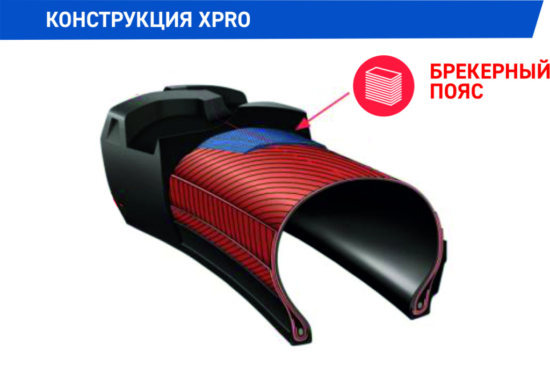Titan: Russia-Ukraine war hasn’t impacted global operations
 As of 3 March, the Russia-Ukraine has not had a significant impact Titan’s business. Indeed, such is its present experience of stability, Titan’s Russian Voltyre-Prom factory just launched a new tyre (Photo: Voltyre-Prom; Titan International)
As of 3 March, the Russia-Ukraine has not had a significant impact Titan’s business. Indeed, such is its present experience of stability, Titan’s Russian Voltyre-Prom factory just launched a new tyre (Photo: Voltyre-Prom; Titan International)
OTR tyre specialist Titan International, which owns the Voltyre-Prom tyre manufacturing operation in Russia, is bracing itself for “the potential impact of bans, sanction programs, and boycotts…” due to Russia’s recent invasion of Ukraine. However, deep in the detail of Titan’s strong fourth-quarter 2021 reports which were published today (3 March 2022), executives affirm that “the impact of the military conflict between Russia and Ukraine has not had a significant impact on global operations”.
Nevertheless, Titan officials report that the company continues to monitor the situation and especially potential impacts, which include “supply chain and logistics disruptions, financial impacts including disruptions to the execution of banking transactions with certain Russian financial institutions, volatility in foreign exchange rates and interest rates, inflationary pressures on raw materials and energy, heightened cybersecurity threats and other restrictions.”
Titan currently owns 64.3 per cent of Voltyre-Prom, which represented roughly 7 per cent of the company’s consolidated assets on 31 December 2021 and 6 per cent of consolidated global sales. Vol-Tyre’s net sales contribute 5 per cent in 2021, compared with 6 per cent of net sales in 2020. The other shareholders during 2021 were One Equity Partners (OEP) and the Russian Direct Investment Fund (RDIF).
However, on 1 February 2022, Titan entered into a Stock Purchase Agreement with the Russian Direct Investment Fund (RDIF) equity holders to buy back restricted Titan common stock for the 25 million as part of previously-agreed option that came as part of Titan’s majority acquisition of Voltyre-Prom in 2018. Here’s a quick overview of how that worked. In November 2021, Titan received regulatory approval for the issuance of restricted stock to RDIF. On 17 December 2021, the company issued 4,032,259 shares of Titan Restricted Stock to the RDIF equity holders subject to the company’s right to repurchase the shares for $25 million until 12 February 2022. On February 1, 2022, the company entered into a Stock Purchase Agreement with the RDIF equity holders to buy back the Titan Restricted Stock and that transaction was completed on 1 February 2022.
Whatever else is going on in Russia and irrespective of the comparative small proportion Voltyre-Prom generates in net sales (circa 6%), the physical scale of Titan’s Volzhsky, Volgograd tyre manufacturing and distribution operation illustrates its strategic significance to the company. At 2.153 million square feet, it covers the second largest area of any Tita facility after the company’s Sao Paulo, Brazil operation (2.917 million square feet).
Voltyre-Prom launches Titan Xpro bias tyres
While many industry players struggle to negotiate the war and sanction-related implications of running a tyre factory in Russia, it appears to be something like business as usual at Voltyre-Prom. As the war in Ukraine entered its seventh day, on 3 March 2022 Voltyre Prom launched the new Titan Xpro bias tyre.
Utilising previously-developed FlexControl technology for Titan radial agricultural tyres, the Xpro is designed to help high-strength materials offer improved adaptability to tyre conditions. According to the company, the essence of Xpro lies in the structural reinforcement of Titan diagonal agricultural and industrial tyres, which reportedly result in “productivity increases; impact and puncture resistance; and extended service life”.
The carcass of a conventional bias-ply tyre consists of layers of textile cord running diagonally from bead to bead at an angle. Crossing of layers provides rigidity and durability of a sidewall. At the same time, this design creates a contact patch of non-optimal shape with an uneven distribution of contact pressure. The use of a breaker belt as part of the Xpro solution stabilizes the carcass in the tread area, distributing mechanical stresses in it more evenly, making the contact patch more rectangular and wider, and the contact pressure more uniform.
The result is said to be improved flotation and traction properties, plus better wear uniformity for prolonged tyre life. In addition, the breaker belt, made of durable cord layers, effectively protects the tyre carcass from impact and punctures, significantly reducing the risk of premature tire failure. The latter point is said to make the new technology especially suited for construction and agricultural applications and – even more specifically – when driving on massive corn and sunflower stubble.



Comments